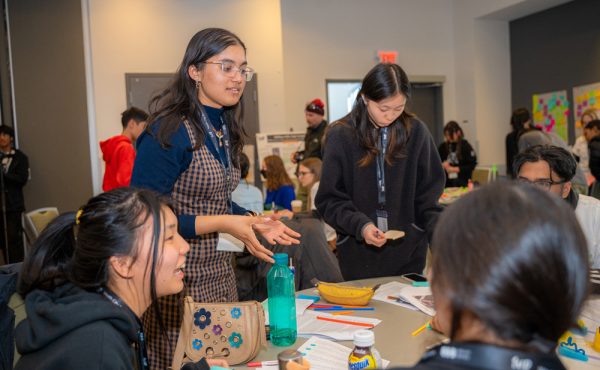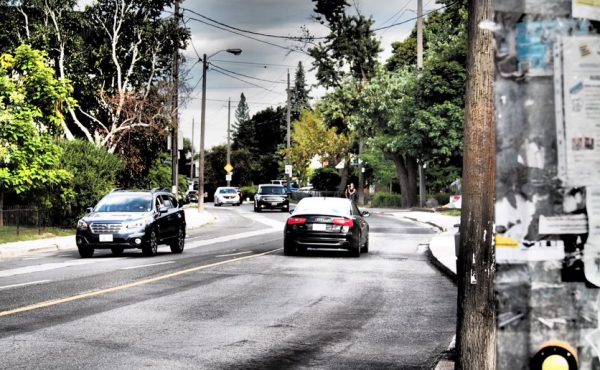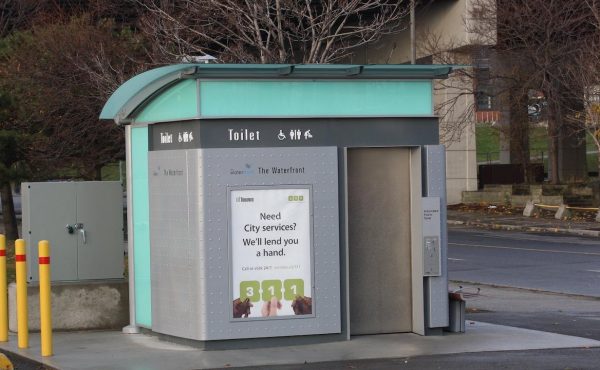
There was a time when kids walked to school, ten miles up hill both ways through the snow of course. Alas, those days are long gone, and today many children are dropped off at school individually by their parents, especially in the suburbs. My former high school in Oakville was a mess of parents picking up one or two kids everyday despite the fact the school was designated walk-only by the school board; meaning no one lived far enough away to qualify for a bus.
In light of increasing concern over traffic problems around schools and rising rates of childhood obesity, schools are beginning to pay closer attention to the transportation habits of their students. One Milton school in particular is drawing attention from around North America with a full out ban on parents driving their kids.
The Halton School Board’s Active and Safe Routes to School program and local public health officials launched the initiative this year at Milton’s P.L. Robertson Elementary School. Costing the board $125,000, the ban on driving is a one year pilot with hopes of expanding to other schools in the community in the coming years.
So far the idea has been a success, project manager Jenifer Jenkins says that the school quickly reached a 100% compliance rate. Surprisingly, the rate stayed high even as the weather worsened, indicating a broader change in student behaviour. Jenkins also says that some students who qualify for buses have opted to walk instead, so as to join their friends. This implies that walking will become more attractive to students as more of their peers do the same.
Encouraging students to walk to school is part of a deeper issue of invigorating the pedestrian environment not only in Toronto but especially in its car-dependent suburbs as well. The pilot project at P.L. Robertson is a great example of what school boards can do to enhance street life, encourage active transportation and improve the health of children.
Photo by Victoria Amato




18 comments
I’d not heard of this and think it is a fantastic initiative. I’m surprised that there wasn’t more opposition, but for the health of the kids and the community in general this strikes me a great step.
brilliant idea.
Great post,great program.
The question is what percentage of students live within 1.6km of their schools (as they do in this program) in order to make it viable elsewhere. Part of the problem, especially in a large urban area with a spread out population like GTA, is student centralization because of specialized programs/schools and large catchment areas. It also doesn’t help that most of kids’ parents are driving to work everyday.
Right now only about a third of Canadian children walk to school, lower in the States.
Lots more good info on this topic in the Vanier Institute study below which I referenced in my post on youth and the spaces around schools a few weeks ago.
http://www.vifamily.ca/library/cft/Torres/children_cities.pdf
How does a driving ban cost $125,000?!
Toronto schools could use some work in this area. Its encouraged here because of lax parking and traffic enforcement both on school property and in the immediate area. I’ve routinely seen someone regularly drive their kids 100 meters to school – then turn around and drive back home.
While I do see this article mentioned in websites such as streetsblog, I would like to see it mentioned on the mainstream news including networks such as CTV or CNN.
Are school staff participating in this program?
Presumably the project manager’s salary is a large part of the 125k?
How is the ban enforced?
Look. I am a teacher. Do you know how principals and superintendents get a ‘100% compliance rate’ from parents? The same way they get a 100% ‘success’ rate at having no suspensions at my school: they lie.
Great idea. The cost seems high, but it’s basically a start-up cost. Once new habits are formed the cost will be zero. The net payback to society in terms of healthier citizens will be hundredfold.
@Laurie – the problem with your last sentence is that the “net payback” may be zero but the people who receive the benefits (health system/Ontario govt) rarely pass on the savings to those who garnered them.
Victoria: Which high school was that? I went to OT, and walking took me about 45 minutes. I rode my bike instead, 15 minutes each way, sun, rain, or snow.
This in Milton, of all places. Home of the 1 hour commute to work in Toronto/Mississauga and one of the worst transit systems in the GTA.
This is great but there need to be supports in place to encourage alternative modes to school – especially bicycling. How many schools have bike lanes on the adjacent roads and access routes? Are how many have bike racks and of those that do, how many are covered? This will require the school, school board and the municipality to work together.
I was at a public meeting recently for new bike lanes proposed to be installed on Lawrence Avenue East which directly serve Glendon College and Toronto French School. There was a mixed reaction to the new lanes among neighbours – it would be great if the schools spoke up in support of bike lanes that would enable their students to safely bike to classes.
I long for the day when I’m old when I’ll be happy to say to anyone that I biked 5 miles to school and back everyday and loved every second of it.
There are NO STOPPING signs in front of schools. NO STOPPING does not mean NO PARKING (one can stop for deliveries or to pick up & discharge passengers), nor does not mean NO STANDING (one can only pick up & discharge passengers, no deliveries). NO STOPPING means no stopping. It does not mean except for parents”, nor it means for everyone else “except for me”.
Unfortunately, I have seen parents or guardians stopping right under those NO STOPPING signs.
I like this idea. but then again i walked or biked to school for 11 years.
I’m big into SRTS, but this seems draconian.
I have thought this for years. I think all school buses and cars need to be dropping children off at a common area several blocks from the schools so the children get some fresh air and exercise and a chance to socialize with one another before classes start.